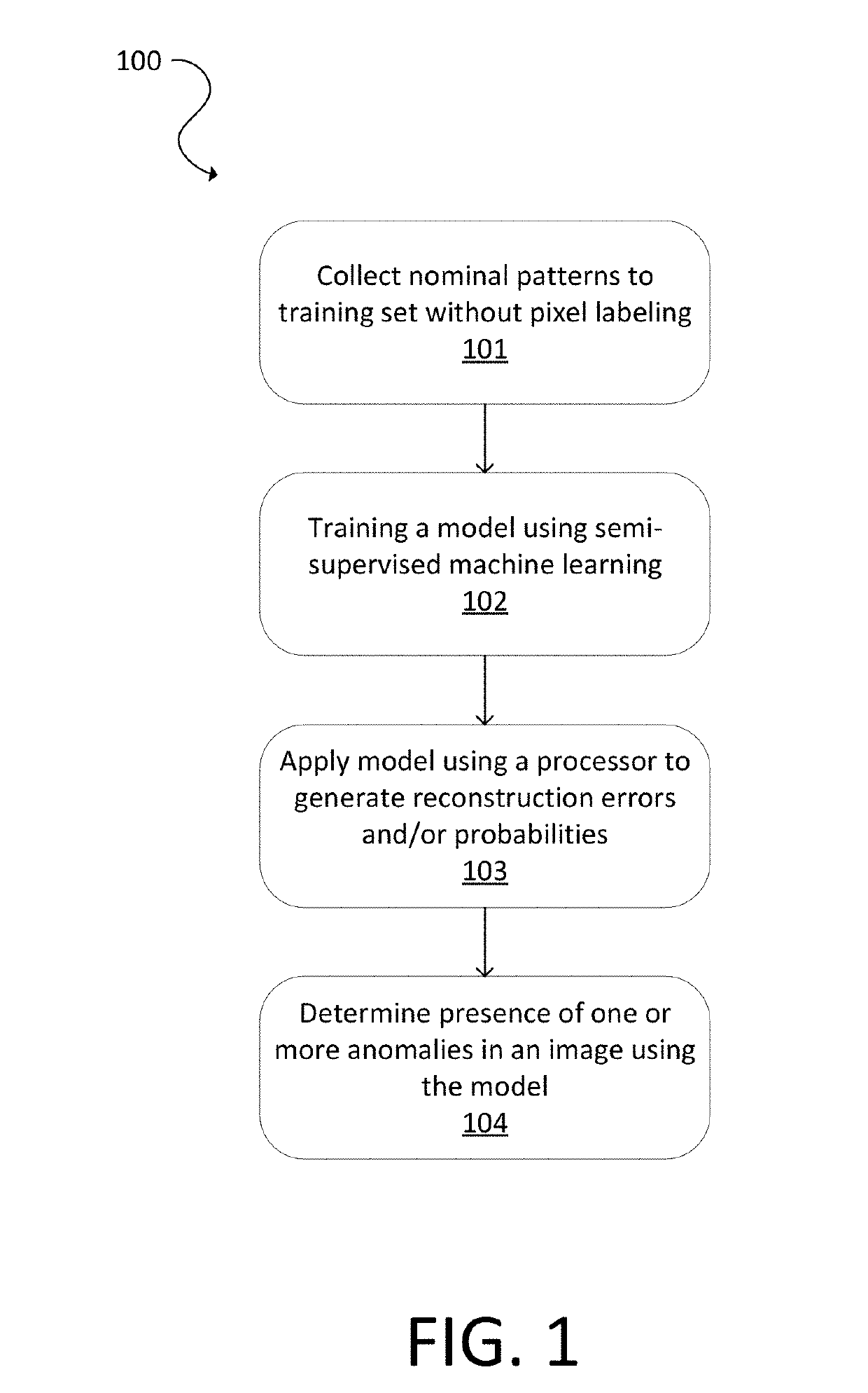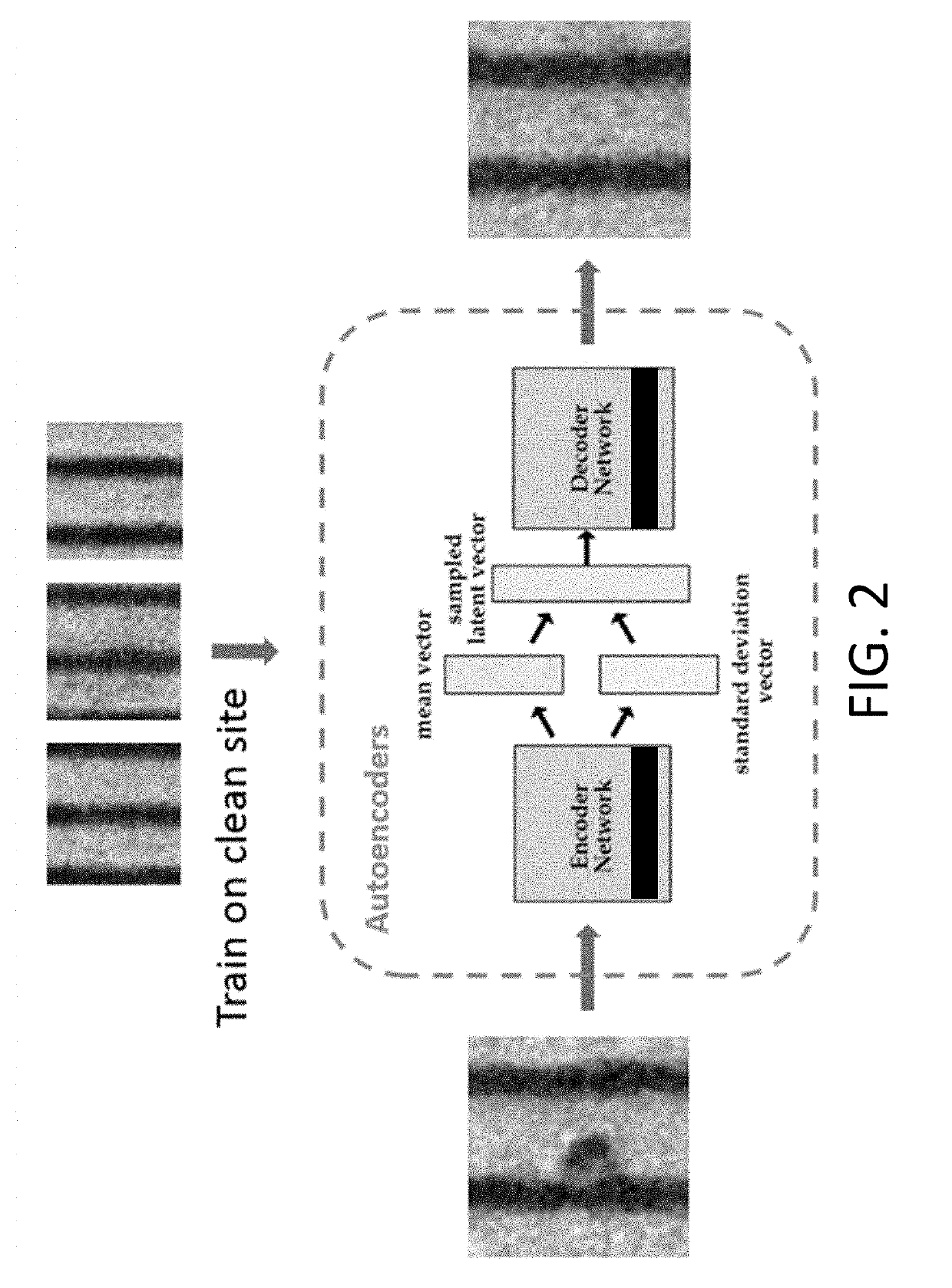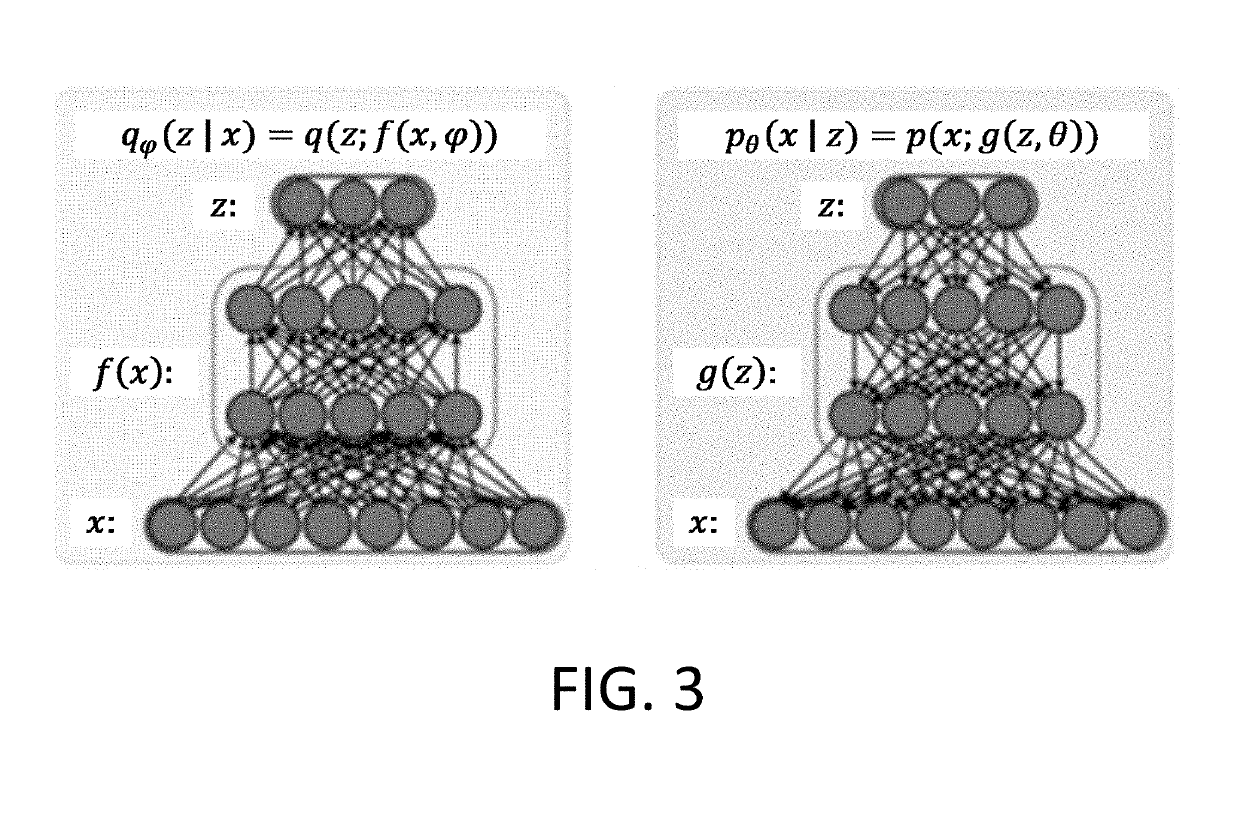Semi-supervised anomaly detection in scanning electron microscope images
a scanning electron microscope and anomaly detection technology, applied in the field of images, can solve the problems of affecting the electrical parameters of the device, the operation of the semiconductor manufacturing process closer to the limitation of the performance capability of the process, and the failure to detect defects of decreasing siz
- Summary
- Abstract
- Description
- Claims
- Application Information
AI Technical Summary
Benefits of technology
Problems solved by technology
Method used
Image
Examples
first embodiment
[0062]In a first embodiment, outliers can be determined using distance in a feature space. Some machine learning feature vectors are extracted from the defect-free training images. When new images are passed in during a test job run, the same types of feature vectors can be extracted from these new images. How far a feature vector of one new image is from the feature vectors of all defect-free training images can be determined. If the distance exceeds a threshold, then the new image is considered an outlier. For example, a center of mass for the image dataset in the defect-free training data can be determined. The distance between the new image and this center of mass can be determined, which can be used to find outliers.
second embodiment
[0063]In a second embodiment, outliers can be determined using a GAN with one CNN as its discriminatory network. A GAN is composed of two networks: a generator network followed by a discriminator network. The autoencoder can be used as the generator and the CNN can be used as the discriminator. All training images for autoencoder may be nominal (i.e., defect-free). Reconstruct images can be generated by this autoencoder using these training images as examples. Some look more real (like nominal images) and some look more fake (like anomaly images). The job of the discriminator is to determine from these generated images which are real and which are fake. After the training finishes, the discriminator network will have the ability to determine which image is nominal (real) while which is anomaly (fake). Thus, the new images (test images) can be passed to the CNN discriminator network to find out if the images are anomaly or not. In this way, GAN can be used to find outliers in new dat...
PUM
 Login to View More
Login to View More Abstract
Description
Claims
Application Information
 Login to View More
Login to View More - R&D
- Intellectual Property
- Life Sciences
- Materials
- Tech Scout
- Unparalleled Data Quality
- Higher Quality Content
- 60% Fewer Hallucinations
Browse by: Latest US Patents, China's latest patents, Technical Efficacy Thesaurus, Application Domain, Technology Topic, Popular Technical Reports.
© 2025 PatSnap. All rights reserved.Legal|Privacy policy|Modern Slavery Act Transparency Statement|Sitemap|About US| Contact US: help@patsnap.com



